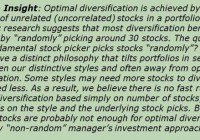Views From The CIO: Three Reasons We (Still) Like The Healthcare Sector
By Mustafa Sagun, Chief Investment Officer, Principal Global Equities I am often asked the same question of why I (still) like healthcare so much. Since 2010, our global unconstrained portfolios have carried significantly larger weights to the healthcare sector than conventional cap-weighted indices. We believe the benefit of owning healthcare stocks is they can provide higher earnings growth, at attractive valuations, with diversification from highly correlated global growth-sensitive stocks. Here are three reasons why we believe healthcare has been a stock picker’s haven: 1. Stock-specific earnings growth that is independent of slowing global growth prospects or commodity prices. Some examples of healthcare companies and some recent earnings growth drivers include: Gilead Sciences (NASDAQ: GILD ) – growth of the Hepatitis C market Shire PLC (NASDAQ: SHPG ) – acceptance of the Attention Deficit Disorder drug in the market Novo Nordisk (NYSE: NVO ) – growth in easy-to-use Insulin injection sales in emerging markets Roche ( OTCQX:RHHBY ) – Multiple new drugs coming through their cancer pipeline. These companies’ earnings growth drivers are independent of each other, and more importantly, independent of the growth rate in China (or elsewhere) or the direction of oil prices (or other commodities). Many other cyclical stocks are more highly correlated. (click to enlarge) 2. Over the last three years, the U.S. healthcare provider industry has been going through a structural shift that will likely continue to drive earnings growth and profit margin expansion. Medical utilization rates are going up and costs are going down; the best of both worlds! Obamacare has resulted in more people being insured and hospitals being paid for the care of previously uninsured, non-paying patients. This is benefiting hospital operators, while keeping costs down for insurers since consumers have to control their expenses themselves. Also, the increased usage of generic drugs relative to branded is more profitable for distributor companies as the profit margins are higher for generics, and generic drug makers are seeing their sales volumes increase as well. Of course, more generic drugs keep the cost to consumers down too! Again, best of both worlds! 3. Biotechs provide optionality for high earnings growth with powerful new drug offerings. I am talking about profitable biotech companies; not the unprofitable, single-drug, small-caps that are highly risky. New generation drugs have multiplied since the mapping of human genome in 2003. For example, GILD offered the first drug to “cure” Hepatitis C in December of 2013 and has seen its quarterly earnings go from $0.55/share in the fourth quarter of 2013 to $3.15/share in the second quarter of 2015, a 473% increase. There are more innovative drugs coming in the pipeline to cure or treat diseases that we previously thought were untreatable. For investors to benefit, stock picking is key here (an ETF will not help.) Editor’s Note: This article discusses one or more securities that do not trade on a major U.S. exchange. Please be aware of the risks associated with these stocks.
